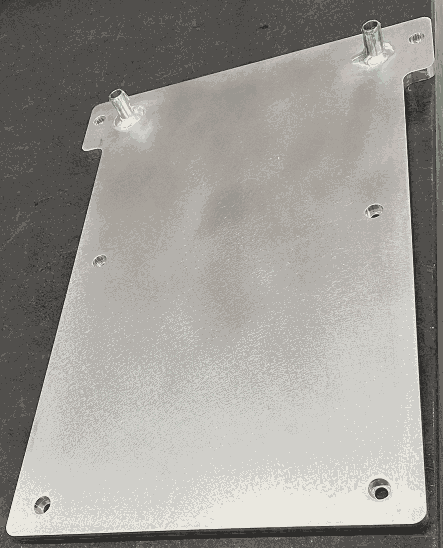Optimized design of Liquid Cold plate to improve heat dissipation capacity
Release time:
2025-07-09 16:00
source:
As an efficient heat dissipation solution, Liquid Cold plate plays a key role in many high-power heat-generating devices. Optimizing its design is of great significance to improving heat dissipation capacity.
From the perspective of structural design, the key is to rationally plan the flow channel structure of the liquid cold plate. A microchannel structure can be used to increase the contact area between the coolant and the cold plate. For example, a serpentine or parallel microchannel is designed so that the coolant can fully absorb heat in the cold plate. At the same time, the roughness of the flow channel is optimized to reduce the resistance of the coolant flow, ensuring that the coolant can flow quickly and evenly through various areas of the cold plate to avoid local overheating.

The choice of materials also directly affects the heat dissipation capacity. Materials with high thermal conductivity, such as copper or aluminum, should be selected as the substrate of the liquid cold plate. Copper has a high thermal conductivity and can quickly transfer heat to the coolant, but the cost is relatively high; aluminum is cost-effective and light in weight, which is more advantageous in some equipment with weight requirements. In addition, special coating treatment can be performed on the surface of the cold plate to improve its heat dissipation performance.
The optimization of the coolant should not be ignored either. Different coolants have different thermophysical properties. Choose the right coolant based on the operating temperature range of the equipment, heat dissipation requirements and other factors. For example, some coolants with high specific heat capacity and low viscosity can take away more heat while maintaining good fluidity.
In the interface design of the liquid cold plate, it is necessary to ensure that the connection with the external pipeline is tight and efficient. Reduce the thermal resistance at the interface, prevent coolant leakage, and ensure the stability of the entire heat dissipation system.
Through the optimization design of structure, materials, coolant and interface, the heat dissipation capacity of Liquid Cold plate can be significantly improved, so as to better meet the heat dissipation needs of modern high-power equipment, ensure the stable operation of the equipment, and extend the service life of the equipment.
Blog
detail
Plate Pulsating Heat Pipe: Key Considerations for Optimal Performance
Explore the essential tips and considerations for working with plate pulsating heat pipes to maximize efficiency.
Unlocking Efficiency: The Magic of Plate Pulsating Heat Pipes in Industry
Discover how plate pulsating heat pipes revolutionize thermal management across various industries.
Optimized design of Liquid Cold plate to improve heat dissipation capacity
As an efficient heat dissipation solution, Liquid Cold plate plays a key role in many high-power heat-generating devices. Optimizing its design is of great significance to improving heat dissipation capacity.
Decoding the Mysteries of Plate Pulsating Heat Pipes: Common Questions Answered
Explore the ins and outs of Plate pulsating heat pipes, uncovering common questions and insights.
Harnessing Innovation: The Rise of Plate Pulsating Heat Pipe Technology
Explore the latest trends in thermal management with Plate Pulsating Heat Pipe technology, its advantages, and applications.
Understanding the Plate Pulsating Heat Pipe: A Marvel of Thermal Management
Dive into the working principles of the Plate Pulsating Heat Pipe, a cutting-edge technology for efficient thermal management.










